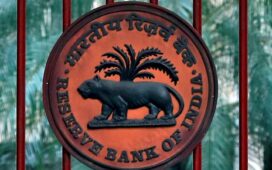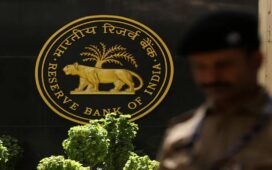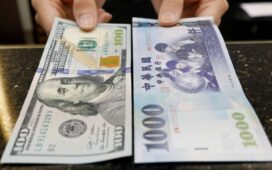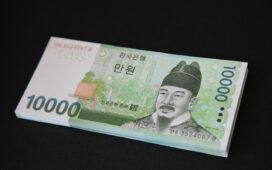SINGAPORE – Malaysia’s ringgit stands to gain the most among its South-east Asian peers if the nation’s exporters convert their overseas earnings to the local currency, thanks to the nation’s outsized foreign-currency deposits.
Such deposits in Malaysia, Thailand, the Philippines and Indonesia combined have jumped to US$62.2 billion (S$80.53 billion) as of March, close to a record high set in the previous month, according to Bloomberg calculations. Malaysia made up almost all of it and the nation’s foreign deposit growth also outpaced most of its peers.
Foreign deposits in the region are coming under greater focus as investors watch for signs of companies converting them to local currencies, as market perception of the dollar sours due to concern over US policymaking and its economic outlook. Heavy foreign-exchange sales by Taiwanese exporters earlier this month helped the local dollar post its biggest single-day jump since 1988.
“Acceleration in broad dollar softness may risk triggering exporters rushing to sell their dollar holdings and that cycle, if it happens, it may result in excessive local currency strength,” said Mr Christopher Wong, a senior foreign-exchange strategist at Oversea-Chinese Banking Corp.
Most major South-east Asian currencies have already rallied to their highest levels this year amid the dollar’s decline and as a temporary trade truce between the US and China improved market sentiment. While excessive currency gains may invite the ire of local authorities, some appreciation may be welcomed as it would open the door for further interest-rate cuts by reducing the depreciation pressure on local currencies.
The Malaysian ringgit was the second-biggest gainer among emerging market currencies in South-east Asia so far this year with a rise of 5 per cent. Earlier this year, the nation’s policymakers urged exporters to convert their earnings into ringgit in a more timely manner to help buoy the local currency.
Malaysia’s foreign deposits grew to 10.6 per cent of the total as of March, according to latest data from the nation’s central bank. That is 1.6 standard deviations higher than the five-year average. The same gauge for Thailand, the Philippines and Indonesia stood at 2, 1.3 and 1.1, respectively.
South-east Asian investors loaded up on dollar-denominated investments during a period of rising returns on US assets.
The US Federal Reserve’s aggressive rate hike cycle in 2022 and 2023 took the upper bound of the Fed fund rate to 5.50 per cent – higher than even the policy rates in Thailand and Malaysia. Currency returns provided another incentive, with the Bloomberg Dollar Spot Index rising 10.5 per cent in the five years to the end of 2024.
While investors have pared extreme bearishness over dollar assets seen in April – when US President Donald Trump announced reciprocal tariffs and spurred doubts over the Fed’s independence – the US fiscal stance is giving investors another reason to shun the greenback.
“Asian exporters should continue to convert their dollars into local currencies, after several years of building up dollar deposits,” Goldman Sachs Group strategist Danny Suwanapruti wrote in a note last week.
The bank favors the ringgit, Singaporean dollar, won and the Taiwanese dollar if trade deals are reached, the yuan rallies to 7 per dollar and if exporters continue to sell the greenback. BLOOMBERG
Join ST’s Telegram channel and get the latest breaking news delivered to you.





